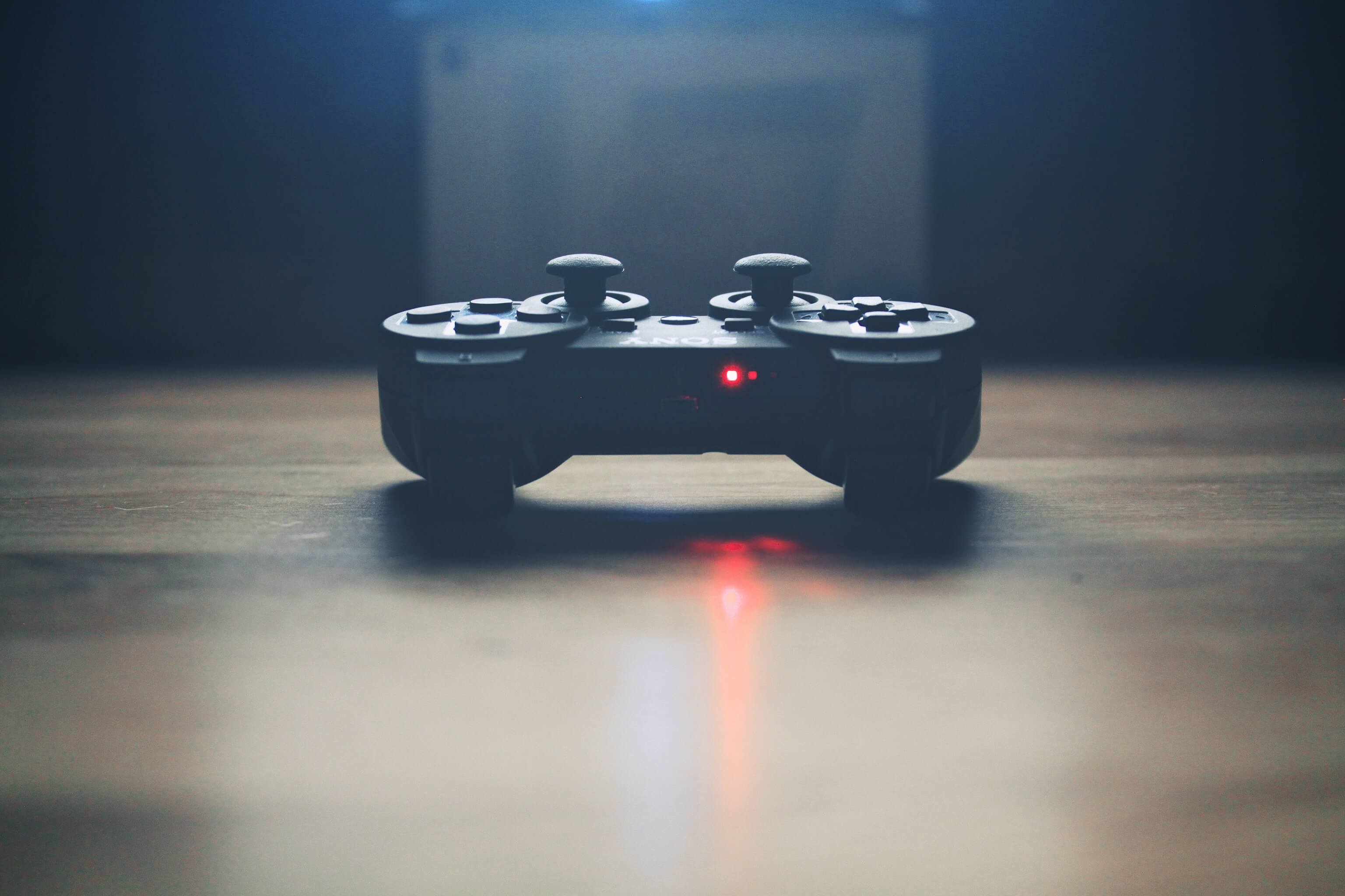As video games have evolved, so have the ways that we control them. In the very early days, there were just knobs (Pong), joysticks with maybe one or two buttons (Asteroids), or trackballs (Marble Madness). These mostly resided within arcades since the hardware to run the games was too expensive for home users. However, with the advent of game consoles like the Atari 2600, video games and the pads to control them evolved in a completely different direction from their arcade counterparts.
Today's controllers have one or two analog joysticks and anywhere from 10 to 12 buttons, excluding those reserved for settings and menus. Then there are the fringe controllers used for specific types of games like racing wheels and flight sticks that have even more modes of input.
The departure from the arcades has drastically morphed how players control games. Here we will take a look at some of the more memorable gamepads and controllers for consoles and PC over the last four decades.
Atari Joystick
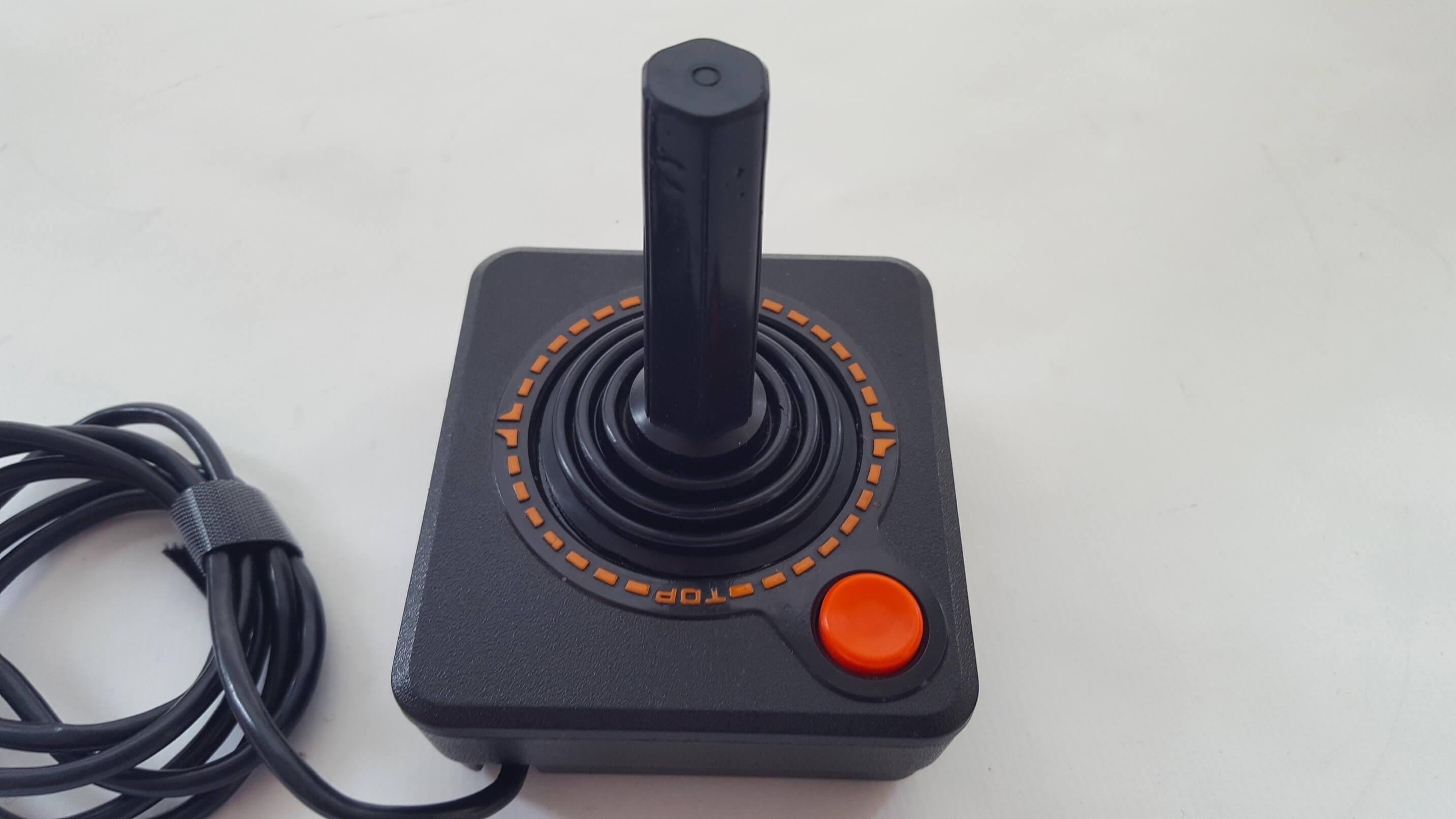
The Atari 2600 released in 1977. While it was not the first console to reach the home market, it is largely considered the one that launched the early console wars. A simple joystick designated the Atari CX10 shipped with the system. A year later the controller was modified slightly (CX40) to make it easier and cheaper to manufacture.
The CX40 is arguably the most iconic controller on this list. What made the joystick so memorable was its minimalistic design. Four digital contacts inside the housing provided 8-way directional control while one button added multipurpose functionality depending on what game was being played. It worked as a fire button for games like Asteroids or Missile Command. In the game Pitfall, it executed jumps; for Breakout and Pong, it launched the ball; and for Pac-Man, it was simply used to start the game.
The CX40 became so popular that many other systems and early computers included an Atari 2600 joystick port in their designs. However, with the advent of the mouse with early Macintosh computers, the CX40 fell out of favor as a preferred input choice for PCs. Despite its eventual abandonment for more complex control mechanisms, the Atari Joystick cemented itself as one of the most iconic controllers in gaming history.
Intellivision
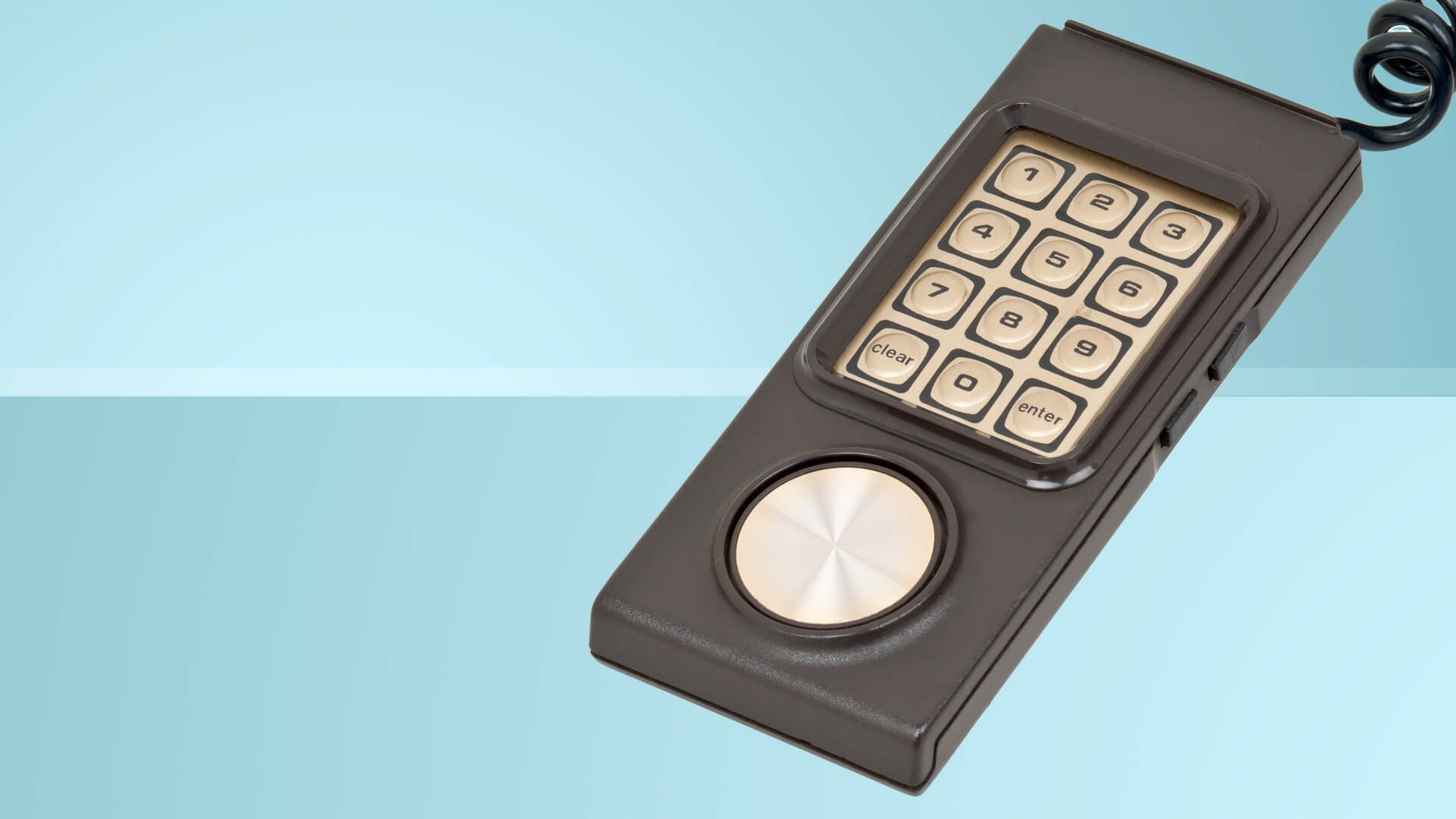
Mattel's Intellivision was a direct competitor to the Atari 2600. The merits of each were hotly debated among fans of both consoles. Objectively speaking, the Intellivision had somewhat better graphics, but more importantly, it was the more forward-thinking of the two consoles. This is especially true for its controller.
Mattel's multi-button disc controller could be considered the grandfather of the multi-button gamepads of today, even though it looked more like a home security keypad. It had 12 buttons on its face (0-9, enter, and clear) and two buttons on either side. The top button on both sides was electronically the same, making it ambidextrous for some game control schemes. Each game would come with an overlay that slid through a slot at the top of the keypad to provide markings for the control layout. Below that was a disc which functioned as the joystick. Unlike Atari's 8-directional joystick, the Intellivision's gamepad allowed movement in up to 16 directions in some games.
Just because Mattel's controller was more forward-thinking than the CX40 does not mean that it was superior. The gamepad suffered from some serious flaws. For one, the overlays were prone to slipping making it problematic in frantic button-mashing titles. Also, the disc became a pain in the thumb during long gaming sessions. Further, the side buttons were underutilized. However, that was a blessing in disguise as the side buttons were somewhat awkward to use anyway. The overall experience while utilitarian, was not very satisfying. In fact, IGN named the Intellivision controller the fourth worst gamepad ever, but that's just another one of the traits that made it memorable.
Super Nintendo Gamepad

The Super Nintendo Entertainment System (aka Super Nintendo. aka SNES) was the 1990 followup to the NES. The SNES improved on the boxy design of its first gamepad by giving the new controller rounded, ergonomic edges and adding four additional buttons --- two on the face plus left and right shoulder buttons.
This change three-upped its direct competitor the Sega Genesis. Sega would later introduce its own six-button gamepad. However, all of its buttons were on the face skipping the shoulder triggers, which are now considered a standard.
The two extra face buttons on the SNES gamepad, labeled X and Y, were placed above and to the left of the A and B buttons respectively. This diamond-shaped configuration would be copied by most major consoles including the PlayStation, Dreamcast, and Xbox, and persists through current-generation systems.
Sony PlayStation Controller

The first PlayStation launched in 1994 and with it came the beginning of the more complex gamepads that we recognize today. The original PS controller had 14 buttons; four directional buttons, four action buttons, four shoulder buttons, and one each for start and select functions. This controller would later become the DualShock on the PlayStation 2.
Sony's gamepad eventually added dual analog sticks for movement and camera controls as well as a rumble motor for haptic feedback. While Nintendo beat Sony to the punch with both of those features (more on that next), the addition of dual analog joysticks gave the DualShock a couple of advantages that changed the way we play games on consoles.
First, adding a stick for movement freed up the directional pad buttons for other uses. While many games, especially at first, made the directional pad a second option for moving (people resist change), the buttons eventually came to be used to do other things such as switching between weapons and equipment.
More importantly, the right-hand analog stick came to be almost exclusively used for controlling the camera in first and third-person shooters. This changed the way these types of games were designed and played on consoles and mimicked to an extent what most PC players had already been enjoying for years, using keyboard and mouse, with the mouse providing the ability to look around.
The "shock" part of the DualShock was the rumble feature which gave developers a way to add vibration during in-game events such as explosions or to simulate the recoil of shooting a gun. Nintendo had introduced vibration with its N64 controller, but it was a "sold-separately" feature.
Nintendo 64 Controller

The Nintendo 64 was released two years after the first PlayStation, copying its competitor's gamepad to some extent. The 10-button N64 controller imitated the dual pistol grips of Sony's console. However, it added a third grip in the middle that had an analog thumbstick up top and a trigger below. This analog joystick would become a standard in nearly every modern gamepad to date. The thumbstick was not the only first that the N64 would bring about.
While other systems had ports for saving games to a memory card, Nintendo included a slot on the underside of the N64 controller rather than on the console itself. Due to poor adoption, this slot was of limited use until Nintendo introduced the "Rumble Pak" a year after the N64's launch. The Rumble Pak added a vibration feature, that would later be incorporated by everybody.
The three-handled design was somewhat clunky in that it required players to switch their grip depending on whether they were using the directional pad or the thumbstick making it somewhat controversial. However, the analog joystick and the Rumble Pak went on to directly influence Sony's design of the first DualShock.
Gamepads on the PC
Up until this point we have only mentioned console gamepads, but for a good reason. Aside from some flight-simulator control sticks and other niche controllers, the preferred input method for PC games has been the keyboard and mouse. However, that does not mean that gamepads never had a market on PC. In fact, there have been a few great controllers for PC, and the SideWinder and Gravis PC GamePad are probably the most memorable.
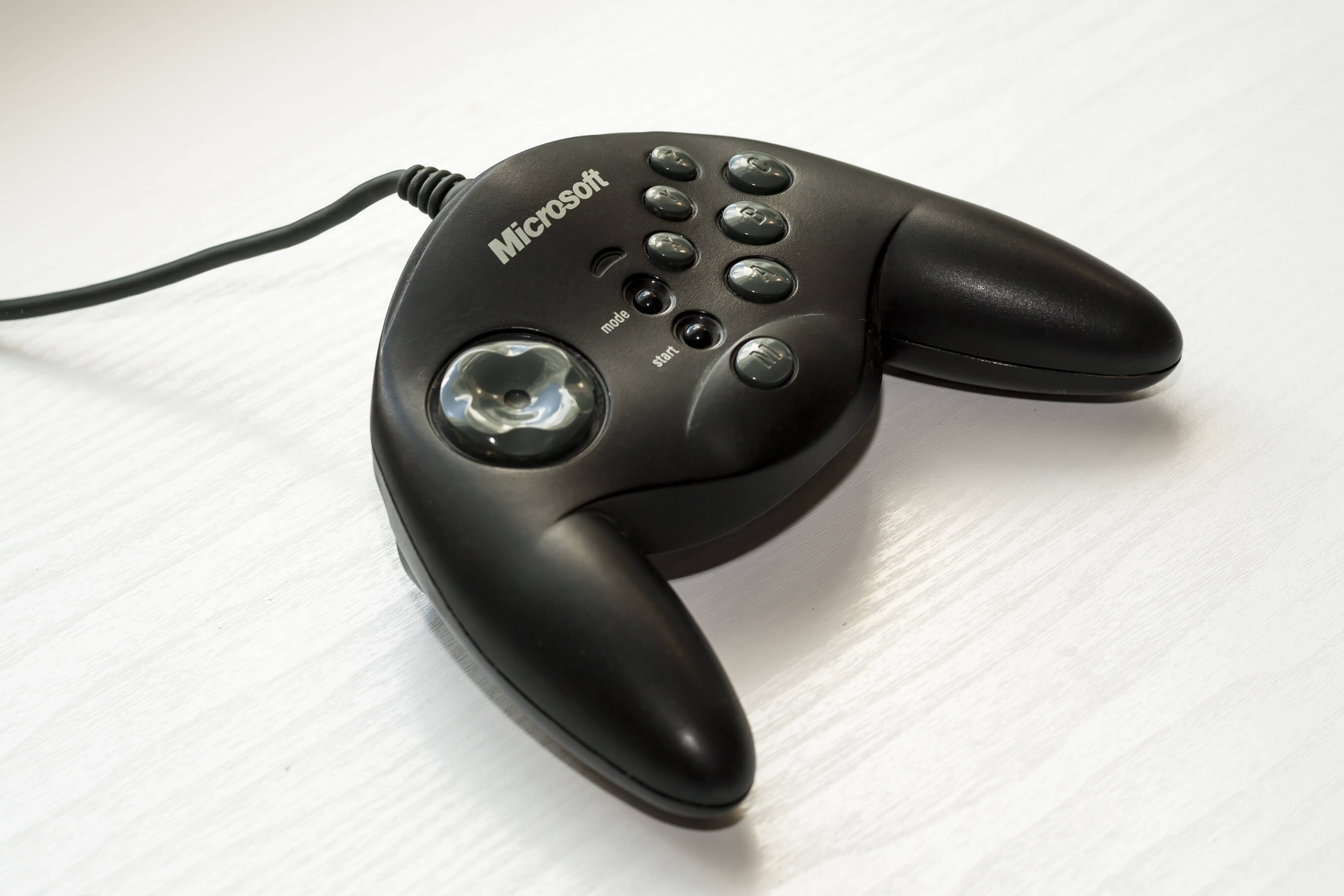
Launched by Microsoft in 1996, the first-generation SideWinder took cues from Sony's PlayStation controller and its dual pistol grips. The primary difference was in button placement. Instead of having four trigger (or shoulder) buttons, it had two. In lieu, Microsoft added two extra buttons to the right side of the gamepad's face. The SideWinder lacked analog control and haptics (Force Feedback), but as mentioned, those things did not come around until the following year when Microsoft added a rumble feature to the SideWinder Force Feedback Pro, which was more a flight stick than a gamepad.
The Gravis PC GamePad came out in 1991 and was the first gamepad for IBM PCs. It was a simple controller that copied the NES' gamepad for the most part. However, instead of having two fire buttons, the Gravis had four. What is interesting about the extra buttons is that the only game that supported all four buttons was shareware title Commander Keen 4: Secret of the Oracle. The superfluous buttons were not useless in other games though. The Gravis had a switch that gave them the same functionality as the primary buttons, but with auto fire.

The D-pad had a hole in the middle that players could screw a small joystick into allowing for more precise control. This came in handy for fighting games that had combos based on the quick entry of directional movements like Street Fighter.
Another, quirky feature that the Gravis had was a switch to invert the controller. This feature was intended to allow left-handed players to play with the controller upside-down, so the D-pad and fire buttons were on the right and left respectively. Again, these controllers while memorable and interesting were eventually abandoned for the tried-and-true keyboard/mouse combination.
Keyboard & Mouse
In the early days of PC gaming, movement was carried out using the keyboard's arrow keys. Up and down arrows moved forward and back, while left and right keys turned in their respective directions. However, with the advent of the free-look camera using a mouse in first-person shooters, came the need to remap movement keys. Most games still mapped movement to the arrows by default but would allow players to bind controls to keys they preferred.

The true origin of the WASD configuration is lost in the mists of gaming history and lore, but the setup gained popularity when Dennis "Thresh" Fong defeated Tom "Entropy" Kimzey at the first nationwide Quake tournament in 1997. While he may not have been the first to use that particular binding, it was his winning of the match that standardized the layout for decades to come.
Knowing the origins of the layout does little to tell us why users still prefer KB/M input over gamepads though. Ask ten different gamers, and you'll probably get ten different answers ranging from a nearly unlimited number of key-binding options to "that's just what I'm used to." However, responsiveness is likely the real reason gamers prefer the method. Indeed, the PC as a gaming machine kept evolving and an entire market of gamer-centric PC peripherals opened up, today with hundreds of differents brands, models and options, on both keyboard and mouse fronts.

Using a mouse to control the camera cannot be beaten by any analog stick in terms of how fast one can spin 180 degrees. Many of today's console games have options to increase stick sensitivity in an attempt to allow mouse-like responsiveness, but it just isn't the same and often results in overturning. The mouse is much more precise especially those with a high DPI explicitly designed for gaming.

Many consider the keyboard more responsive as well. Most gamers will go for a more expensive mechanical keyboard over a membrane or OEM keyboard since mechanical keyboards are more tactile and reliable. Additionally, keyboards allow for custom mapping dozens of other keys. For example, in RPGs, the number keys 1-9 often serve as quick-use inventory slots. Instead of having to open the inventory to use that scroll that you only need once in a while, you just hit its corresponding number key. This type of mapping is simply not possible with gamepads.
For these reasons, PC gamers, pro and amateur alike, will likely continue to favor the KB/M configuration until we reach the feasibility of neural interfaces for controlling our games or some other alternative that is just as powerful and efficient.
The Non-Gamepads
So far we've looked at traditional controllers. That is to say controllers that resembled the primary gamepads that we use today. However, there is a whole other world of input mechanisms radically different from conventional methods. These are non-gamepads (or fringe controllers).
Steel Battalion Controller

The Steel Battalion controller was designed exclusively for the 2005 Capcom game of the same name. Players piloted giant mechs called "vertical tanks" (VT). With Steel Battalion, Capcom ambitiously set forth to make the most realistic (and complicated) mech simulation ever created. This goal required a control scheme that was just as complex.
The Steel Battalion controller had 40-buttons, two control sticks, one gear/throttle stick, and three foot pedals. Just as an example of the complex nature of the game, when starting up the VT, players had to go through a sequence of button presses on the control panel to initiate the mechs various systems. According to IGN's review, "[It] has one of the steepest learning curves of any Xbox game to date because of the variety of skills you need to have, [and] the unfamiliarity of the controller."
The controller and game came bundled for $200 at the time, and it is now considered a collector's item. It was eventually re-released, but the newer version's backlit console buttons are blue instead of the original's green to distinguish it from the collector's piece.
Nintendo Zapper Lightgun
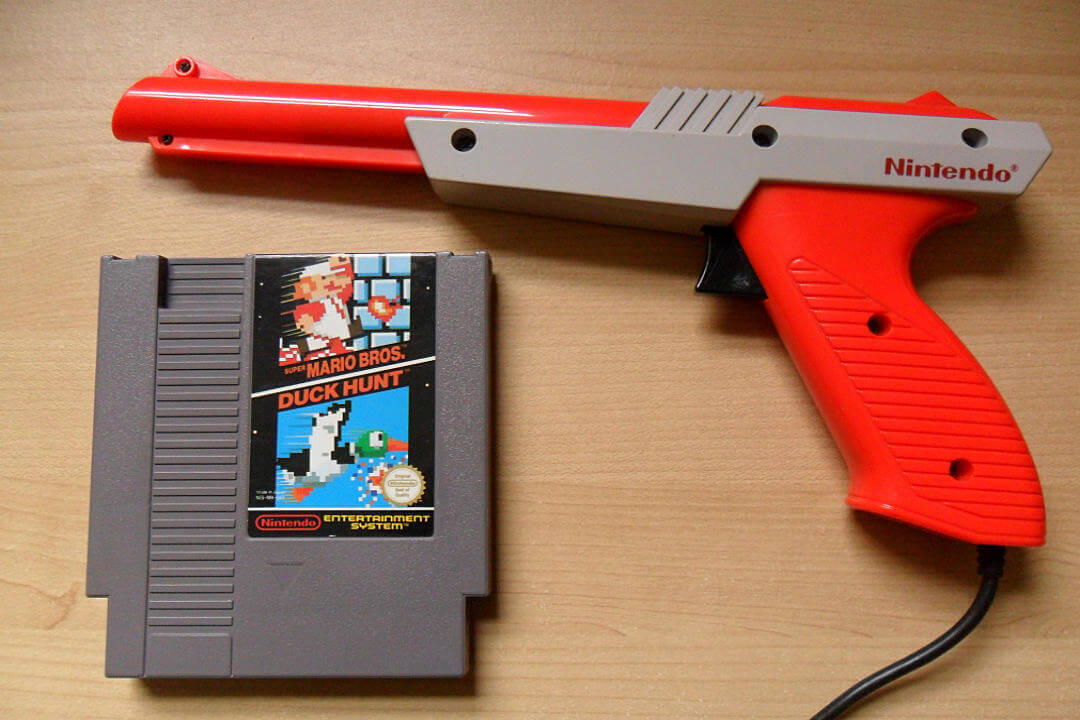
Going way back to the NES days, we have the Zapper. Shaped like a futuristic laser pistol, the Zapper was a very simple input method consisting of only a trigger button and a light sensor on the barrel.
The way it worked was whenever the trigger was pulled the NES would flash a black screen for a single frame. On the next frame, any valid targets would be drawn on the darkened screen. The light sensor would detect a hit by gauging the light level. If detected light, the NES would determine which object was "zapped" by the duration of its flash.
The two most popular Zapper-compatible games were Duck Hunt, which came bundled with the console, and Hogan's Alley. A handful of others were released, but never really caught on like Freedom Force and To the Earth. There were also a few titles including The Adventures of Bayou Billy, The Lone Ranger, and Operation Wolf that allowed optional use of the Zapper. This certainly signaled how Nintendo (to this day) has been one of the most inventive and risk-taking game console makers when it comes to controllers.
Guitar Hero Controller
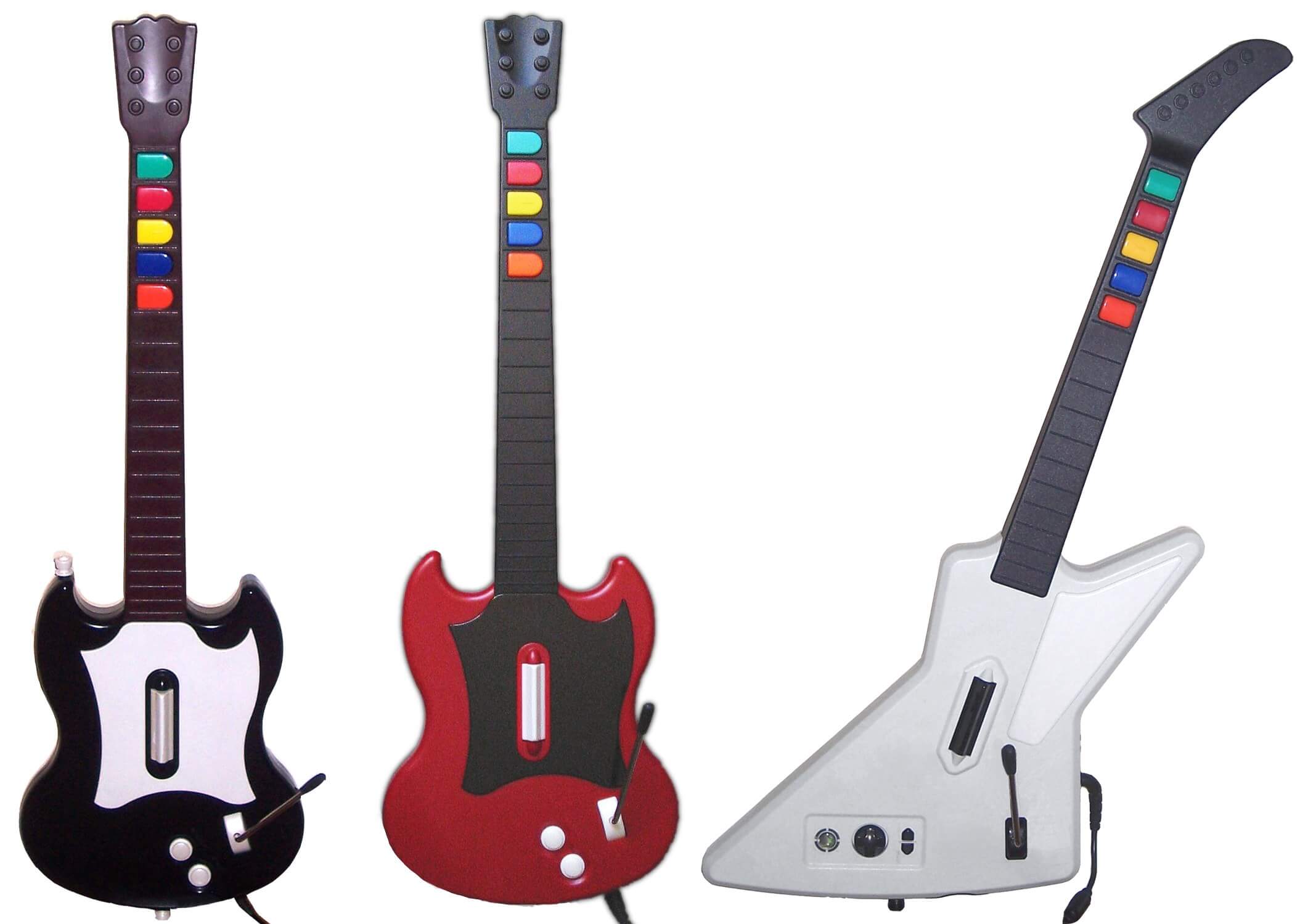
When Guitar Hero launched in 2005, it became an instant hit. Its licensed music from well-known artists including Pantera, Queens of the Stone Age, Ozzy Osbourne, and Blue Oyster Cult to name a few, made it popular for rock-and-roll fans of all ages, but it was its guitar-shaped controller that really had people playing it in droves.
The bundled controller was a basic-looking unit shaped like a small guitar. It had five buttons on the neck, Start and Select buttons, a strumming switch that could be activated with either an up or down motion and a vibrato arm, on the main body. The guitar was wireless and came with a dongle that plugged into the USB port of the PS3. Interestingly, the Xbox did not require a dongle since the guitar used the same 2.4GHz wireless as its controller.
The game and its input method became so popular it spawned several variations of the guitar controller. It also launched a slew of sequels and a competitor called Rock Band which added vocals, drums, synthesizer, and other instruments to the mix.
And more...
Gamepads have come and gone throughout the years, each one either introducing something new, reinforcing existing features, or showing designers what not to include in the future. This evolution of control mechanisms is likely to continue well into the future as console, PC, and game makers continue to imagine new ways to control games. We are currently seeing this play out in VR/AR.

We have presented here some of the more notable contributions over the last 40+ years, but it is by no means an exhaustive list. We did not even touch on controllers like the HORI Racing Wheel Apex for racing games or the Thrustmaster T-Flight Hotas X for flight sims. In both instances, there have been many popular models aimed at racing/flight sim fans that are on a category of their own.
There are also variants on the gamepads listed that did something special that we did not cover such as the InterAct PS ProPad for PlayStation 1 & 2 which added slow motion as well as hands-free auto and rapid fire. I still own a PS ProPad as it is one of my all-time favorite controllers. Is there one that didn't make our list that was particularly memorable for you? Let's reminisce about them in the comments.
